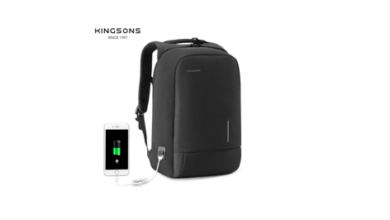Measuring Dining Experience With The Help of Mystery Shopping

The food service industry is a highly promising sector, driven by the increasing disposable incomes of consumers and the growing trend of dining out. However, restaurants face challenges in retaining customer loyalty due to intense competition. To overcome this, restaurants must develop unique selling points to attract repeat customers. Some establishments differentiate themselves through their food offerings, others through their location and ambiance, while some focus on providing excellent service. This is where the mystery shopping programs for restaurant inspection can be of great help. These programs help evaluate restaurant businesses so that they can improve their customer service and get good results in the future.
Factors That Determine The Experience of a Restaurant
Now there are certain factors that mystery shopping service providers always tend to look for when it comes to inspecting a particular restaurant or a food service provider. In this article, we are going to have a detailed discussion of this topic.
These factors collectively shape the dining experience and are evaluated through restaurant mystery shopping programs. These programs include various aspects such as:
- First Impression: The initial impression of a restaurant can significantly influence a customer’s decision. Mystery shoppers assess the ease of reaching the restaurant and its location. They evaluate the visibility, condition, and relevance of the signage, ensuring it represents the brand and showcases current promotions. Additionally, they consider the cleanliness and maintenance of both the exterior and interior areas, including tables, crockery, cutlery, and restrooms. Hygiene standards for customer areas such as dining spaces and restrooms are also evaluated. The absence of flies or insects and the overall physical condition of the walls and floors are taken into account.
- Ambience: The ambiance of a restaurant plays a crucial role in enhancing the dining experience. Mystery shoppers assess factors such as the temperature and lighting inside the restaurant. They also evaluate whether there are any foul smells that might negatively impact the overall atmosphere.
- Steps of Service: Mystery shopping evaluates whether servers follow the standard steps of service and interact effectively with customers. Mystery shoppers assess various aspects of service, including:
- Greeting & Seating: Mystery shoppers evaluate if customers are greeted or acknowledged promptly upon arrival. They assess the attitude of the staff and their ability to seat customers at fully laid tables. The presentation of a well-maintained menu or beverage menu card is also considered.
- Food Ordering: Mystery shoppers assess the timeliness of the employee’s approach to the table. They evaluate the employee’s ability to assess customer preferences, such as food type and taste. Knowledge about the ingredients and specialties is also considered.
- Upsell & Cross Sell: Mystery shoppers check if employees proactively suggest add-ons during food ordering, such as beverages or desserts, to increase the total bill amount.
- Speed of Service: Efficient service is essential for customer satisfaction and optimal table turnover. Mystery shopping service providers evaluate the time taken for food to arrive after ordering and assess the promptness of employee responses to customer requests.
- Food Quality: This aspect encompasses the presentation, taste, and temperature of the food. Mystery shoppers evaluate how well the food items are presented and served. They ensure that the food is delivered within the promised timeframes and at the appropriate temperature.
- Billing Experience: The billing experience is measured based on factors such as the time taken to produce the bill, the provision of a clean and complete invoice with a list of ordered items, and the availability of a feedback form for customers to share their experience.
Wrapping Up
To measure these parameters and drive necessary improvements, it is important to conduct restaurant audits on a monthly basis. These audits provide a microscopic and objective perspective, evaluating essential aspects of the customer dining experience. The results are used to update policies, establish timelines, and identify training needs for staff members.
By regularly conducting restaurant audits and leveraging mystery shopping services, establishments can gain valuable insights into their performance, identify areas for improvement, and ultimately enhance the overall dining experience for their customers.





